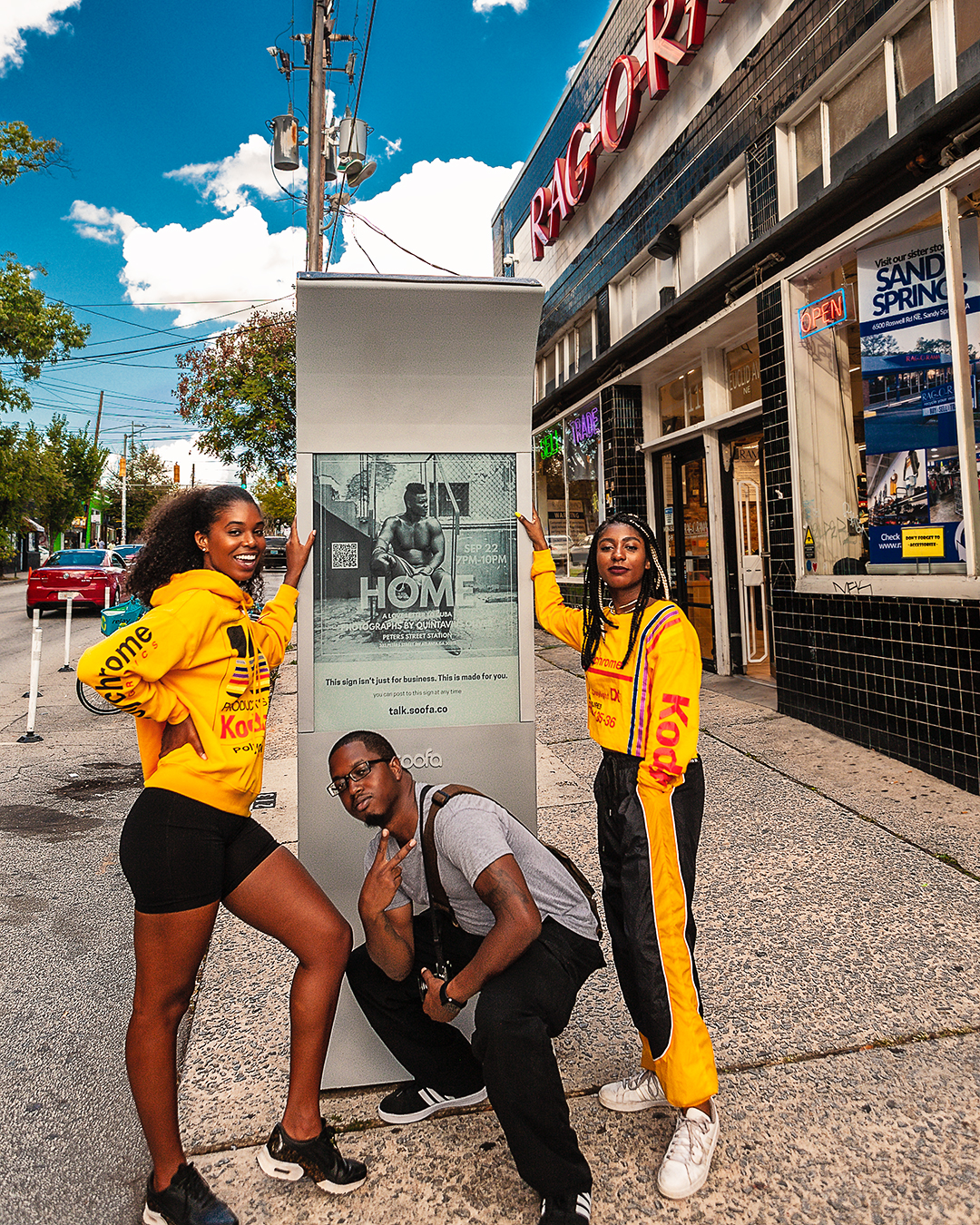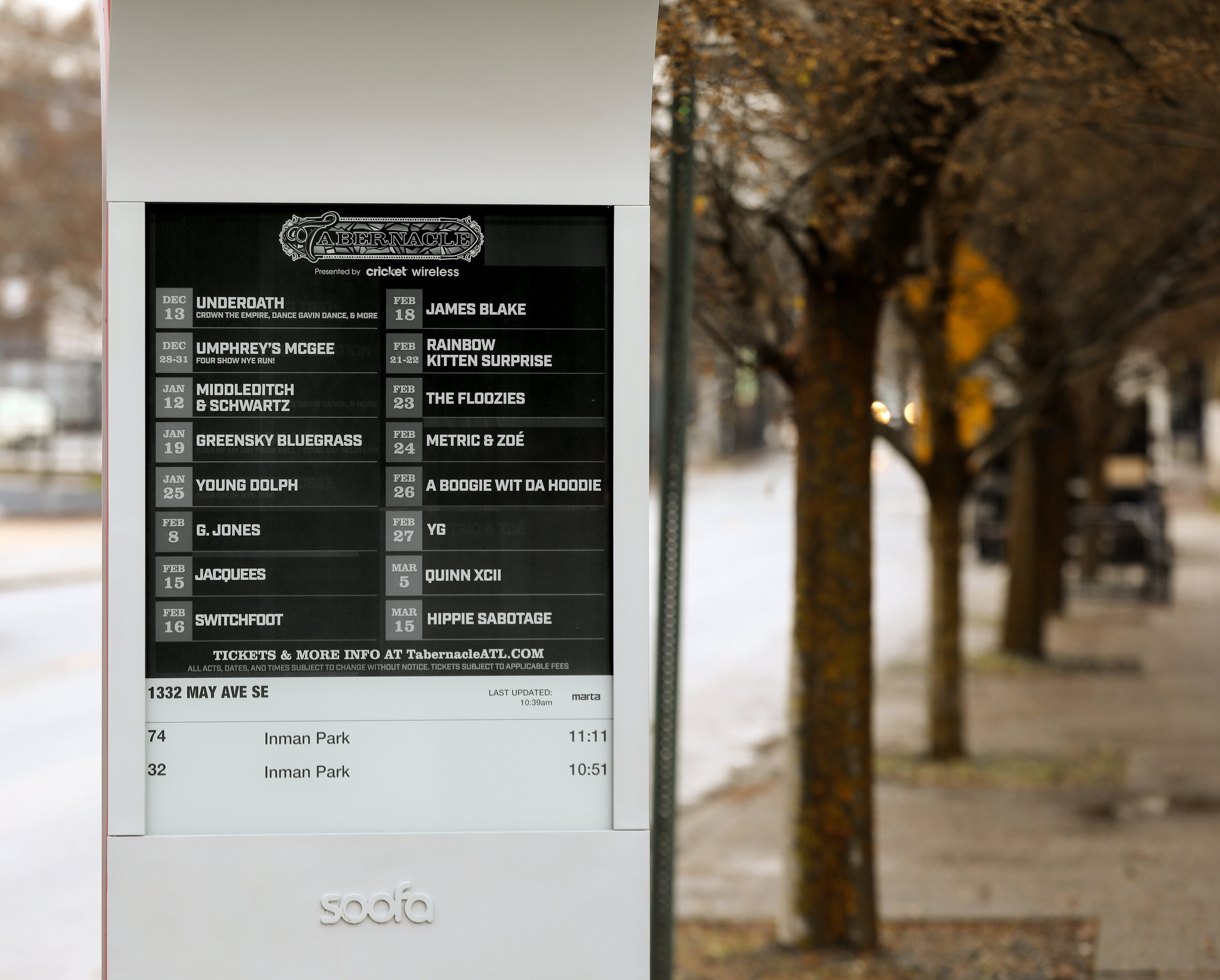What we’re learning: The Soofa outdoor neighborhood sign as a digital bulletin board
The Soofa Sign is an outdoor digital bulletin board for neighborhoods. In 2018 we deployed Soofa Signs in more than twenty neighborhoods in three strategic early adopter cities, Boston, Atlanta, and Las Vegas. They were selected following a competitive application process in 2017, which featured 75 cities.
As we get set to expand into Miami-Dade County through the Ford City of Tomorrow Challenge and build on our current installations in Atlanta, Boston, and Las Vegas, we wanted to reflect on what we’ve learned working with forward thinking cities who use Soofa Signs to extend their reach and improve the performance of their public communication.
Our vision has always been that the Soofa Sign helps people discover and more fully experience the neighborhoods they live in, work in, visit, and pass through. Over the past year we have worked closely with our city partners, local business communities across diverse neighborhoods, and, of course, the public (who is ultimately the end user of technology like digital signage in the public right of way) to realize the vision of the Soofa Sign as an outdoor digital neighborhood bulletin board.
These are some of our key learnings:
People love having control over what they see on signs in their neighborhood.
Getting to city-wide scale actually means growing neighborhood by neighborhood.
Great content is key and it doesn’t have to be hard to create.
Locals and visitors care about what nearby businesses have to say.
Big companies are eager to change outdoor advertising, becoming more relevant and contextual.
People love having control over what they see on signs in their neighborhood.
Opening our content management system, Soofa Talk, to everyone has created a sense of public ownership over the Soofa Sign, which has led to high engagement, authentic messaging, and no significant vandalism of the signs themselves. We saw something similar when we deployed benches across 120 cities over the years: when the public clearly sees the value in a new technology – in the case of the Soofa Bench, solar powered phone charging – a sense of ownership of a public asset builds.
Getting to city-wide scale actually means growing neighborhood by neighborhood.
The approach to placing Soofa Signs, or any type of infrastructure that is public facing, can’t only be top down, nor only bottom up – it needs to meet in the middle to realize its maximum value across a diverse population. Cities, big and small, are a collection of neighborhoods.
Understanding exactly what people want in the neighborhoods they live in, work in, and visit is key.
Then taking this bottom up information to inform the widespread expansion of the network from the top down ensures that growth is based on actual citizen demand. In this approach we are able to have a vision for the future while still remaining grounded in the incremental growth day to day, letting us set clear, tangible measures of success that inform a city-wide network deployment.
Our process has helped drive citizen demand.
In cities like Atlanta and Boston, neighborhood associations know their neighborhoods best. In fact, in many of our installations, our team has received unanimous support at neighborhood meetings; the Inman Park neighborhood association blocked a highway from going through their neighborhood, but they fully supported Soofa Signs. Residents also know where technology like the Soofa Signs will be most impactful for their neighbors and visitors.
The signs are fantastic. [They will be best] at the Memorial Terrace Walker Park entrance, [where there is] a lot of foot and paw traffic, because of a 6 acre park, community garden and dog run. There are also several MARTA bus stops off of Memorial Drive [which would be perfect for the Soofa Sign’s real-time transit display]. We will also have two new restaurants opening up in the next two weeks [who could use the Soofa Signs to introduce themselves]. Thanks, again.
KaeAnne Parris, MPH, President, Organized Neighbors of Edgewood
Great content is key and it doesn’t have to be hard to create.
Clear calls to action, beautiful design, and clever copy make people take action. We’ve co-created templates with city departments like the Atlanta Office of Customer Service, community advertising partners, and neighborhood influencers that make the process simple and seamless to repurpose social media content for the outdoors.
The City of Atlanta 311 tested six pieces of content over a two week period in early February 2019.
The simple QR code post converted 22 ATL311 app downloads, while being shown for less than 1% of the total available time on the Soofa Sign network.
API integrations like the Soofa Sign’s minute by minute transit arrival applet and rolling nearby events calendar applet provide useful information on the bottom 25% of the sign display, which is displayed 100% of the time. Soofa Signs deployed just in time for Super Bowl LIII in Atlanta displayed real-time MARTA arrival information.
Locals and visitors care about what nearby businesses have to say.
Local businesses help give neighborhoods their identity – new offerings, special events, grand openings bring people into neighborhoods they may not call home and keep them coming back. Jillian’s in Fenway, the Corner Tavern in Little Five Points, and ImprovBoston in Cambridge are just a few of the businesses that use the Soofa Signs in their neighborhoods to build deeper relationships with existing customers and bring in new ones.
Big companies are eager to change outdoor advertising, becoming more relevant and contextual, and useful.
When you think of outdoor advertising, what may come to mind is a big highway billboard plastered with content from a brand trying to sell you something or loudly remind you that they exist.
What we’ve learned is when given the opportunity, big companies and brands are very willing, and in fact, eager, to engage their audience at a local level.
With the Soofa Signs, the experience of advertising for big companies and brands is more like Instagram, where they are part of a feed of user generated content that is fun, beautifully designed, relevant, and contextual.
But it isn’t just about advertising to customers and potential customers, it is also about recruiting and retaining talent. Companies like Wayfair in Boston are running recruiting and employer branding campaigns on Soofa Signs in neighborhoods where their employees and future employees live, work, and play.















